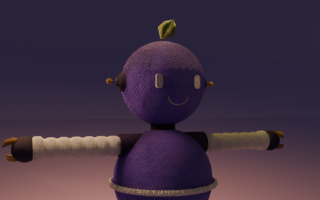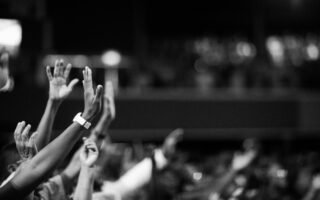In today’s cinema, the line between reality and digital artistry has become increasingly blurred, thanks to the revolutionary advancement of visual effects (VFX). Epic action sequences that once seemed impossible to capture on camera are now brought to life through a sophisticated blend of practical effects, digital artistry, and cutting-edge technology.
The Evolution of Action Sequences
The journey from practical stunts to digital enhancement represents a remarkable transformation in filmmaking. What started with simple camera tricks and practical effects has evolved into complex digital choreography that pushes the boundaries of imagination. Modern action sequences combine:
- Traditional stunt work
- Practical effects
- Digital enhancements
- Computer-generated imagery (CGI)
- Motion capture technology
Impact of VFX on Modern Filmmaking
Visual effects have revolutionized how action sequences are conceived and executed. Directors can now:
- Create impossible camera movements
- Design more elaborate action sequences
- Ensure greater safety for stunt performers
- Achieve perfect timing and execution
- Scale scenes beyond physical limitations
Pre-Production Process
Concept Development
Storyboarding
Every epic action sequence begins on paper:
- Shot-by-shot breakdowns
- Camera angle planning
- Effect placement mapping
- Timing specifications
- Scene transitions
Previsualization
Modern previsualization (previs) technology allows filmmakers to:
- Create 3D animated versions of scenes
- Test different camera angles
- Determine technical requirements
- Identify potential challenges
- Plan resource allocation
Technical Planning
Shot Design
Careful planning ensures efficient execution:
- Camera movement choreography
- Lighting requirements
- Practical effect placement
- Digital effect integration points
- Safety considerations
VFX Breakdown
Each sequence is analyzed for:
- Required digital elements
- Practical effect components
- Integration challenges
- Resource requirements
- Timeline estimates
On-Set Production Elements
Practical Effects Integration
Stunts and Physical Effects
The foundation of realistic action sequences:
- Wire work
- Pyrotechnics
- Physical props
- Stunt coordination
- Safety protocols
Prop and Set Design
Practical elements provide:
- Real-world interaction points
- Lighting references
- Physical boundaries
- Texture details
- Scale references
Green Screen Fundamentals
Setup and Lighting
Proper green screen setup is crucial:
- Even lighting distribution
- Wrinkle-free screen surface
- Correct screen placement
- Color spill prevention
- Marker placement
Actor Interaction
Guiding performers in a virtual environment:
- Reference point awareness
- Movement timing
- Eye-line matching
- Physical interaction marking
- Performance adjustment
Motion Capture
Performance Capture
Recording human movement for digital enhancement:
- Full body capture
- Facial expression recording
- Hand and finger movement
- Prop interaction
- Stunt performance recording
Post-Production Magic
Digital Asset Creation
3D Modeling
Creating digital elements requires:
- Character models
- Environment assets
- Vehicle designs
- Weapon effects
- Destruction elements
Texturing and Lighting
Achieving photorealism through:
- Surface material definition
- Light interaction properties
- Environmental reflection
- Shadow casting
- Atmospheric effects
Compositing Process
Layer Integration
Combining multiple elements:
- Plate photography
- CGI elements
- Particle effects
- Atmospheric layers
- Color correction
Special Effects Elements
Particle Systems
Creating dynamic effects for:
- Explosions
- Debris
- Smoke
- Fire
- Environmental particles
Dynamic Simulations
Physics-based effects including:
- Fluid dynamics
- Cloth simulation
- Rigid body physics
- Soft body deformation
- Environmental interaction
Advanced VFX Techniques
Environment Extensions
Digital Set Creation
Building virtual worlds through:
- Set extension
- Digital matte painting
- Environmental modeling
- Texture mapping
- Lighting integration
Weather Effects
Controlling environmental conditions:
- Rain and snow systems
- Wind effects
- Lightning
- Atmospheric pressure
- Temperature visualization
Action Enhancement
Combat Sequence Enhancement
Elevating fight scenes with:
- Impact effects
- Speed ramping
- Motion trails
- Physical augmentation
- Environmental interaction
Conclusion
The creation of epic action sequences in modern films represents a perfect symphony of artistic vision, technical expertise, and cutting-edge technology. While the end result appears seamless on screen, the complex process behind these sequences involves countless hours of planning, coordination, and precise execution across multiple disciplines.
FAQ
- How long does it typically take to complete VFX for a major action sequence?
Major action sequences can take 6-12 months from pre-production to final delivery, depending on complexity and scale. - What percentage of modern action sequences are practical vs. digital effects?
Most major action sequences use a 60/40 split between digital and practical effects, though this varies by production. - How many VFX artists typically work on a single action sequence?
Large-scale action sequences often require teams of 50-200 artists working across different specializations. - What’s the most challenging aspect of creating realistic action VFX?
Integration of CGI elements with practical footage while maintaining consistent lighting and physics is often the biggest challenge. - How has VFX technology changed action sequence planning in recent years?
Real-time previsualization and virtual production techniques have revolutionized how action sequences are planned and executed, allowing for more precise planning and immediate feedback.




